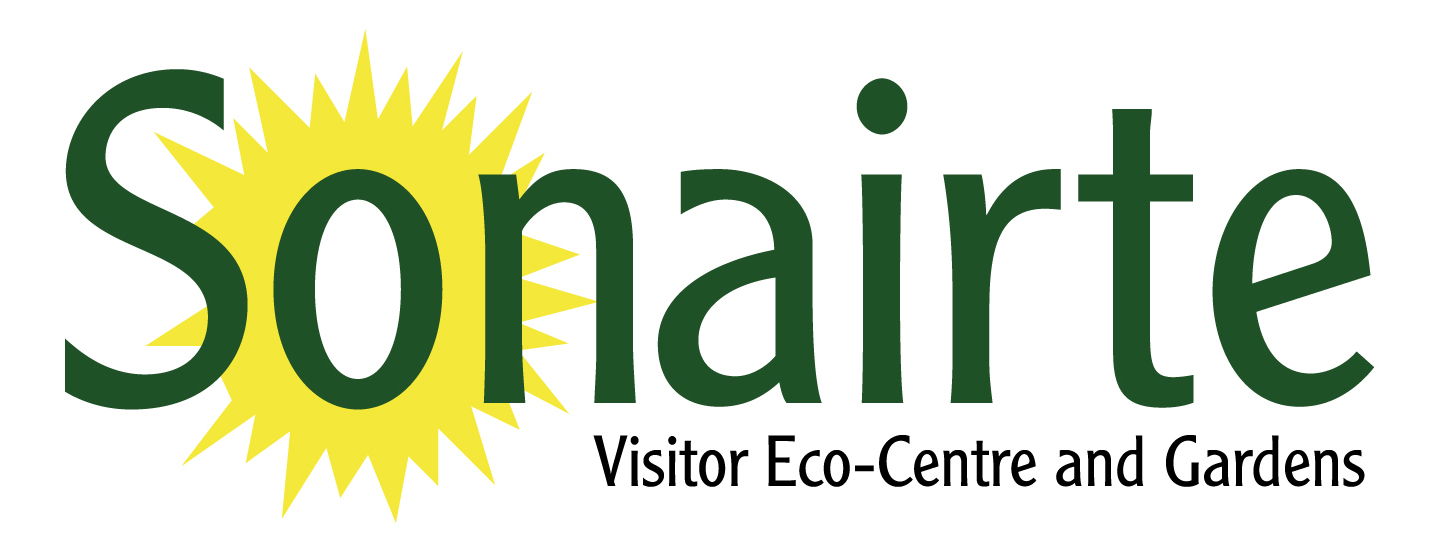Heritage – 2000 years of sustainable living at Sonairte
The earliest remaining evidence of human activity at The Ninch is the Stone Age chamber tomb to be seen on the right hand side of the road between Sonairte and the railway line. A partial excavation many years ago found two Iron Age graves, but the main chamber has never been excavated. One member of the Sonairte staff remembers sliding down its steep sides on a tea tray as part of his summer at the seaside experiences.
The rath within the Sonairte site was seriously damaged both by 18th and 19th century quarrying of the underlying gravel and by the road building of the modern period. Only a small part of its double ditch surround remains and the only find we have from the period is a single blue glass bead. However, this is enough to tell us that the site dates from the late Iron Age/early Christian period when this sort of structure surrounded a hilltop farmstead, partly for defence, but also to protect the cattle from marauding wolves in winter and the vegetable garden from marauding cattle in summer! Such raths were almost completely self sufficient, and this one would have been particularly so since the land would have been suitable for the production of cattle, sheep, pigs, grain and vegetables, and the sea would have provided ample fish supplies.
In the 9th century it must have provided some protection for the local population against raiding Vikings, but it could be that it also provided a target for them. Later settlement patterns at the Ninch seem to show what could be either Viking period hide plots or later burgage plots – since the Ninch lies within both Viking Leinster and the later Pale only more detailed excavation can show which it is. Both hides and burgage plots are designed to provide a family with a basic food supply and once again the families at the Ninch would have done particularly well because the plots run down to the river bank with its plentiful supplies of fish and migrating wild fowl.
The land at Sonairte passed through various different hands in the medieval period – you can pick up a leaflet on this at the Eco Shop – and in the seventeenth century there was also a water mill at the edge of the river. Unfortunately we have been unable to find any trace of this since it seems to have been demolished as part of the building of the eighteenth century garden, but there is a small drawing on a contemporary map which can be seen in the Bee Boles museum. It is not known whether this was a tidal mill or whether the small stream that rises from a spring to the north of the modern road served it. The former seems to be more likely.
The eighteenth century farm provided the very latest in modern self sufficiency. The walled garden provided enough fruit and vegetables to feed the family and their extensive staff all the year round, bees provided honey, not only as sweetening but for food preservation, and there was even the luxury of a dovecot to provide a constant supply of tender squabs for the table. In winter the straw bee skeps were moved indoors to one of two sets of bee winter housing. Only one of these survives today and houses the bee boles museum, where the history of the site is displayed and where artefacts found in the garden and during restoration work are on view. The exhibition changes constantly as more information comes to light.
